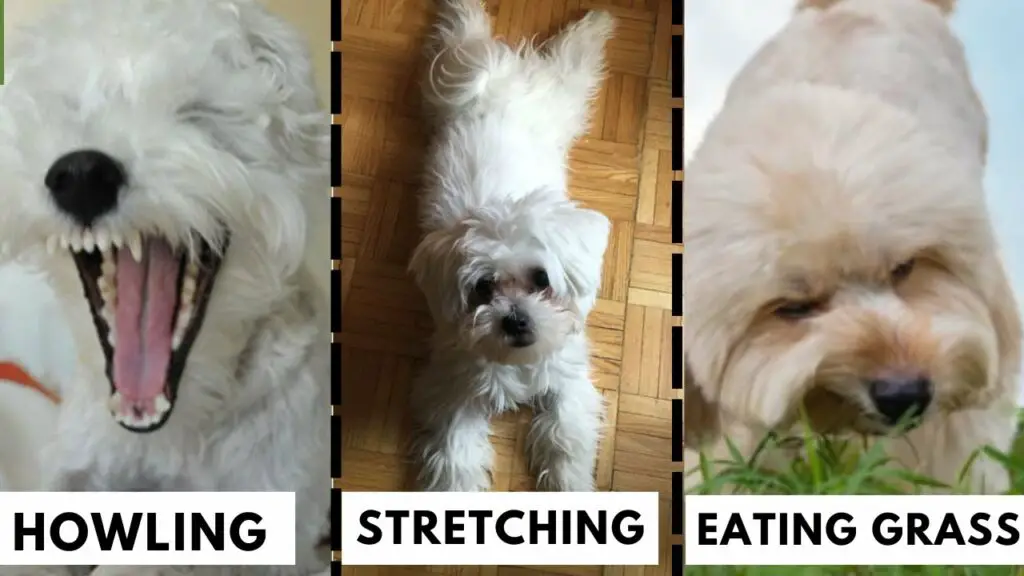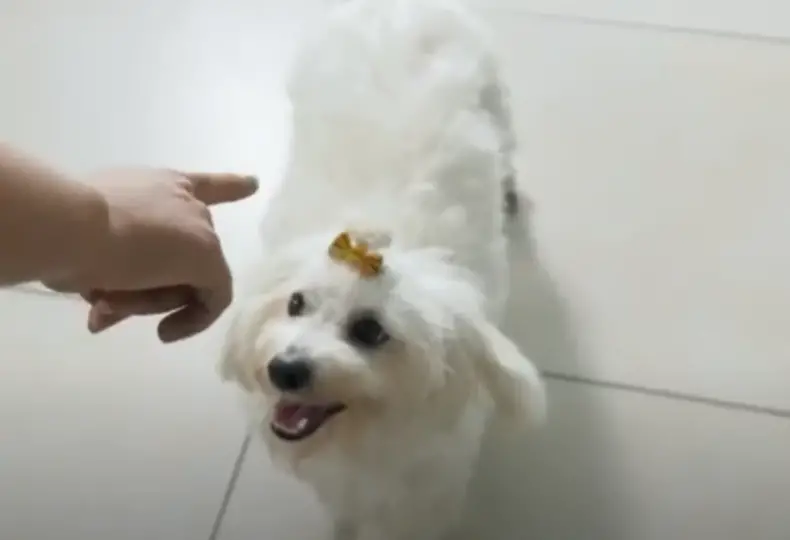
From tail wagging to head pressing, Maltese dogs exhibit a variety of behaviors that can leave their owners scratching their heads. In today’s episode, we’ll delve into 20 peculiar behaviors commonly observed in Maltese dogs, shedding light on their meanings and potential causes.

1. Tail Wagging: The speed and position of your Maltese’s tail can convey various emotions, from happiness to submission or excitement.
2. Showing Teeth and Biting: Retracted lips and exposed teeth signal aggression or dominance, while snarling and muzzle wrinkling indicate extreme anger.
3. Tail Chasing: While often harmless, excessive tail chasing could indicate underlying health issues or obsessive-compulsive tendencies.
4. Yawning: Yawning in dogs can indicate stress, fatigue, or confusion, serving as a coping mechanism to relieve tension.

5. Shaking Head: Head shaking is a common response to relief from tension or excitement, but it can also signify discomfort or anticipation.
6. Barking and Yelping: The tone and duration of barks and yelps can convey a range of emotions, from aggression and danger to friendliness or pain.
7. Growling: Low or medium growls may indicate protectiveness or anxiety, while soft growls can signal alertness or contentment.
8. Opening Eyes and Staring: Wide-eyed stares may denote alertness or dominance, while avoiding eye contact can signify politeness or submission.

9. Carrying Food: Dogs may carry food to protect it or as a natural instinct, but excessive hiding could indicate stress or anxiety.
10. Head Pressing: Urgent head pressing against objects warrants immediate attention, as it may indicate serious health issues.
11. Digging: Normal digging behaviors can range from burying valuables to hunting instincts, but excessive digging may signal boredom or stress.
12. Howling: Howling is often a response to loneliness or the desire to communicate with other dogs or humans.
13. Licking Lips: Lip licking can indicate stress, uncertainty, or even sexual arousal in dogs.
14. Flicking Ears: Ears flicking forward and backward suggest attentiveness to unfamiliar sounds or stimuli.

15. Wrinkling Muzzle: Muzzle wrinkling accompanied by teeth exposure indicates aggression or defensiveness.
16. Stretching: Stretching is a sign of relaxation, happiness, or readiness for play after a period of rest.
17. Peeing and Pooping in the House: Unexpected accidents indoors may indicate underlying medical issues or inadequate training.
18. Staring at You: Intense staring may signal a desire for attention, treats, or affection from their owner.

19. Eating Grass: Grass consumption is a common behavior, often unrelated to digestive issues and more likely driven by boredom or instinct.
20. Sniffing Other Dogs’ Butts: Butt sniffing is a natural form of canine greeting and communication, driven by a dog’s keen sense of smell.
Conclusion: Deciphering Canine Communication
Understanding your Maltese’s behaviors is essential for strengthening your bond and ensuring their well-being. By decoding these strange behaviors and responding appropriately, you can foster a harmonious relationship with your beloved furry friend. Remember, each behavior serves as a clue to your dog’s emotional state and needs, so observe attentively and respond with care.


